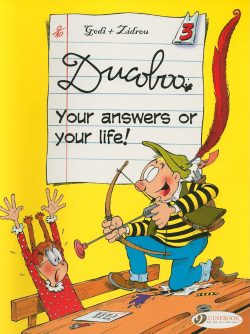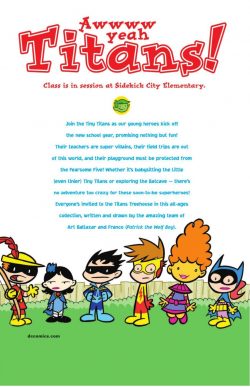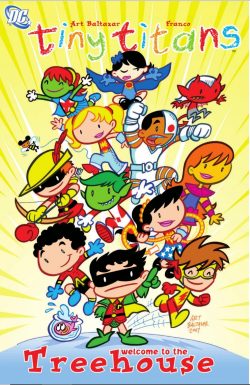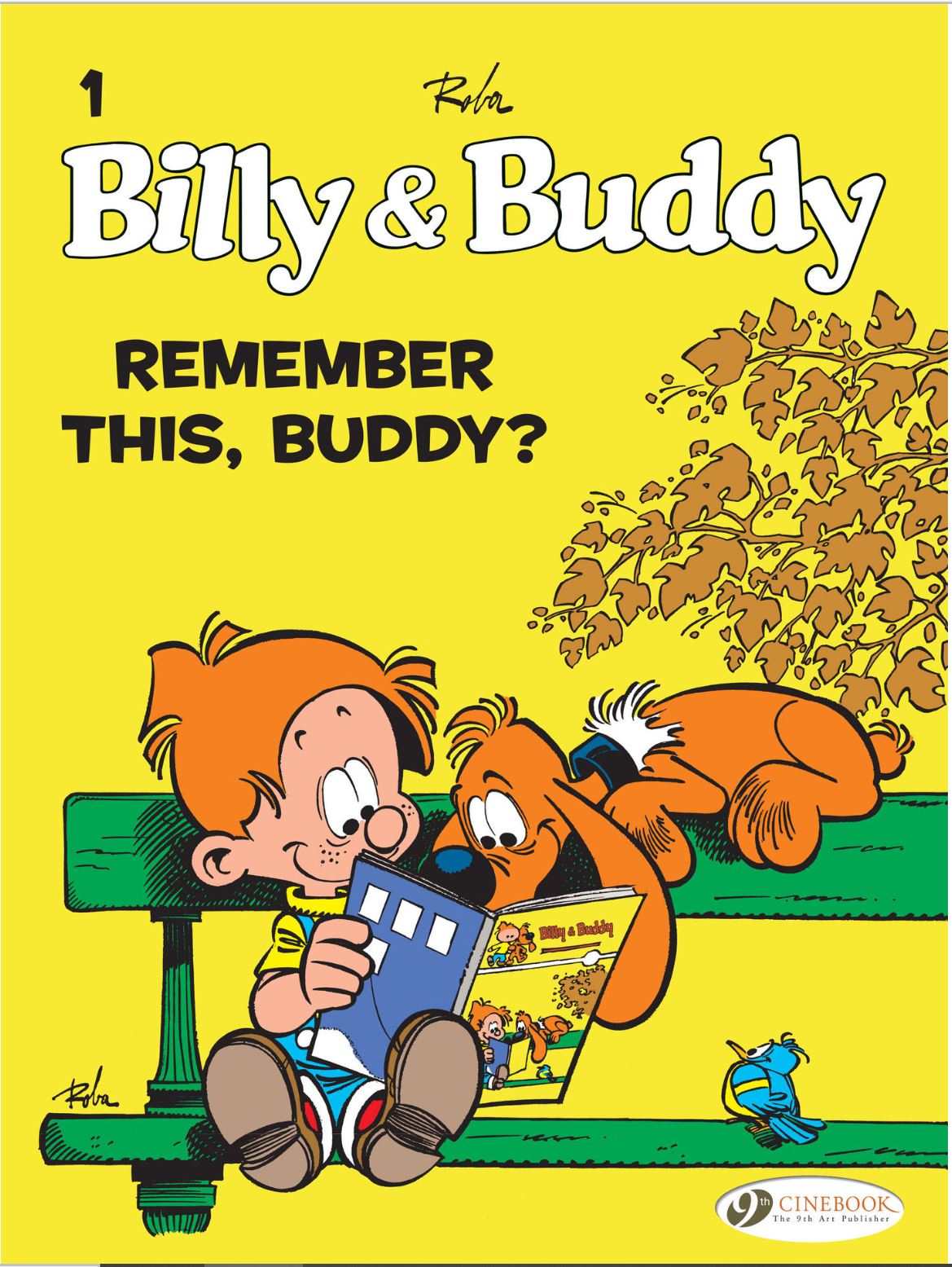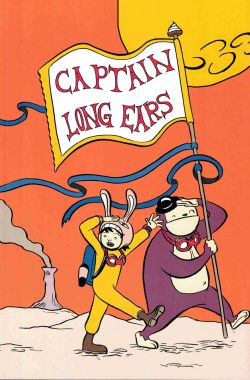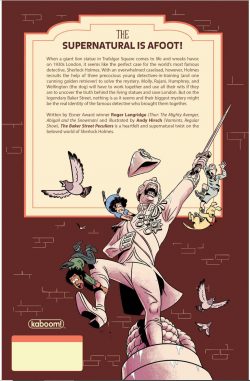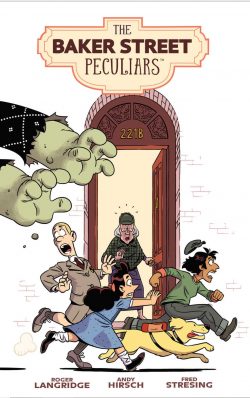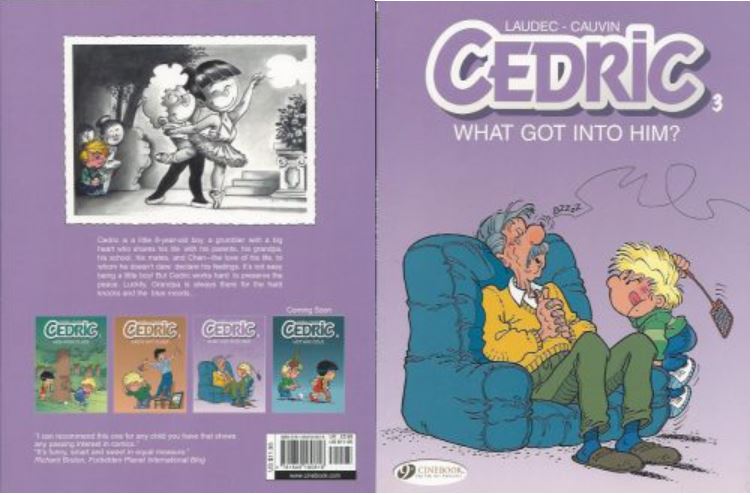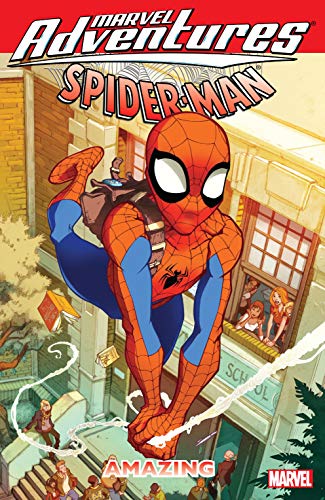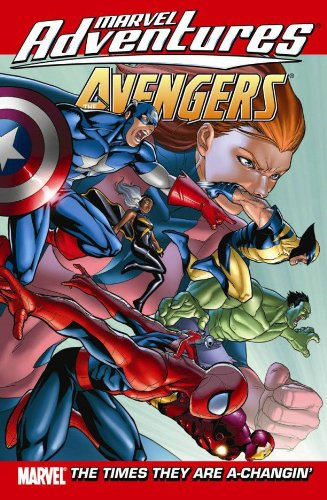
By Paul Tobin, Matteo Lolli, Ig Guara, Casey Jones, Christian Vecchia & Sandro Ribeiro (Marvel)
ISBN: 978-0-7851-3832-7 (PB/Digital edition)
Time for another anniversary shout-out, so let’s celebrate the fact that The Avengers #1 (cover-dated September 1963 but on sale from July 2nd) was sold out on newsstands all over America by today’s date…
In 2003, the House of Ideas created a Marvel Age line updating classic original tales by Stan Lee, Jack Kirby and Steve Ditko before merging it with remnants of its failed manga-based Tsunami imprint, which was also intended for a junior demographic.
The experiment was tweaked in 2005, becoming Marvel Adventures with core titles Marvel Adventures: Fantastic Four and Marvel Adventures: Spider-Man carrying all-original yarns. Additional titles included Marvel Adventures: Super Heroes, Power Pack, Hulk and The Avengers, which ran until 2010 when they were cancelled and replaced by new volumes of Marvel Adventures: Super Heroes and Marvel Adventures: Spider-Man.
This particularly light-hearted digest-sized collection re-presents issues #32-35 of Marvel Adventures Avengers (from 2009), offering stand-alone yarns to delight fans with a sense of humour and iota of wit…
What You Need To Know: this incarnation of the World’s Mightiest Superheroes operates an “open-door” policy where almost every metahuman marvel might turn up for duty. However – presumably because of their TV cartoon popularity – the Wondrous Wallcrawler and Jade Juggernaut are on scene in almost every episode…
Written throughout by Paul Tobin (No Romance in Hell, Plants vs Zombies), an avalanche of fast-paced fun begins with ‘The Big Payoff’ illustrated by Matteo Lolli & Christian Vecchia, wherein the team gets a most unpleasant visit from Special Agent Clark Harvey of the Internal Revenue Service.
This weaselling civil servant is ostensibly there to collect individual Avengers’ taxes, but it’s all a ploy to blackmail the team into forcing a bunch of defaulting villains into paying up…
Smart and deviously hilarious, the clashes between Giant-Girl, Spider-Man and Luke Cage against Whirlwind, the web-spinner and erudite philosophical monster/political activist Oog or Man-Bull versus Iron Man are entertainment enough, but Iron Man and Giant-Girl overmatched against the Absorbing Man and the childlike Hulk convincing assassin Bullseye to do his patriotic duty are utterly priceless…
When jungle king Ka-Zar visits from the Antarctic lost world, all he can think about is learning how to use a car. Sadly Wolverine, Storm, Giant-Girl, Hulk and Spidey all feel safer battling an invasion of super-saurians unleashed by Stegron the Dinosaur Man than sitting in the same vehicle as the Lord of the Savage Land in ‘You’re Driving Me Crazy’, with art by Ig Guara & Sandro Ribeiro…
When ancient Egyptian magicians turn time into an out-of-control merry-go-round, ‘Sgt. Fury and his Howling Commandos!’ (Lolli & Vecchia) are caught up in the assorted eras of chaos, with Ant-Man, Giant-Girl, Tigra, Storm, the wallcrawler and Hulk frantically fighting just to keep up…
Rendered by Casey Jones, this titanic tiny tome concludes on a romantic note in ‘Lovers Leaper’ when all the female Avengers head off for a vacation break. They foolishly thought Captain America, Cage, Spider-Man, Hawkeye and Wolverine could handle things for a while, but boys will be slobs and soon the HQ is a ghastly mess of “man-cave” madness…
Moreover, since Hawkeye now needs a date for the Annual Archer Awards, he tries an on-line dating service, and uploads not just his but all his buddies’ information onto the site…
With seemingly every eligible lady – super-powered and not – in New York City subscribing to the Lovers Leap site, our unsuspecting heroes are soon being bombarded by an army of annoyed women who think they’ve been stood up by the utterly oblivious Avengers.
… And when they try to get the owner to remove their details, the heroes discover French former bad-guy Batroc the Leaper is in charge and unwilling to do them any favours…
Smart and fun on many levels, bright, breezy and bursting with light-hearted action and loads of solid laughs, this book offers a fabulous alternative to regular Marvel Universe angst and agony. Even with the violence toned down and “cartooned-up” these stories are superbly thrilling and beautifully depicted: a perfect introduction for kids and adults alike to the vast realm of adventure we all love…
These collected stories present an intriguing and perhaps more culturally accessible means of introducing character and concepts to kids born generations away from those far-distant 1960s originating events.
© 2010, 2011 Marvel Characters, Inc. All rights reserved.





